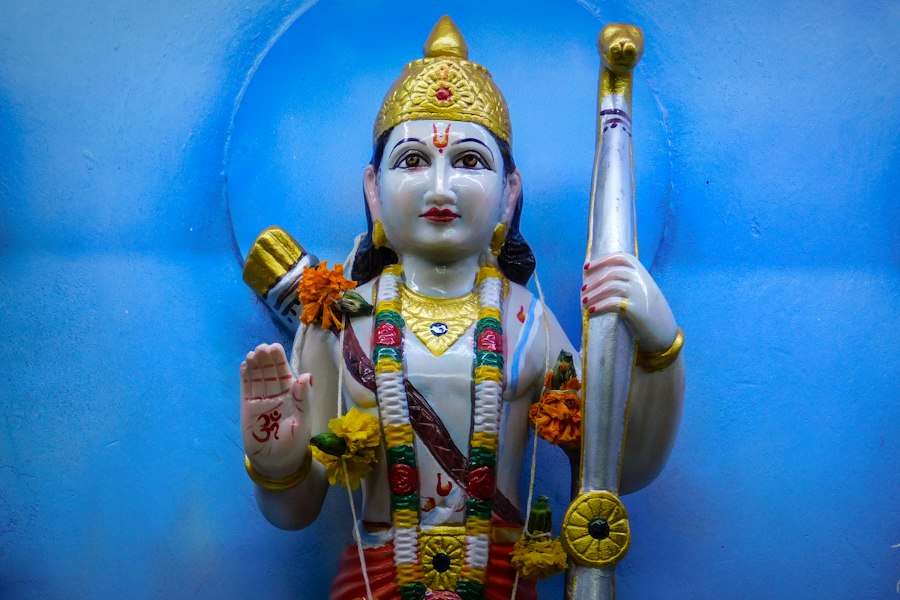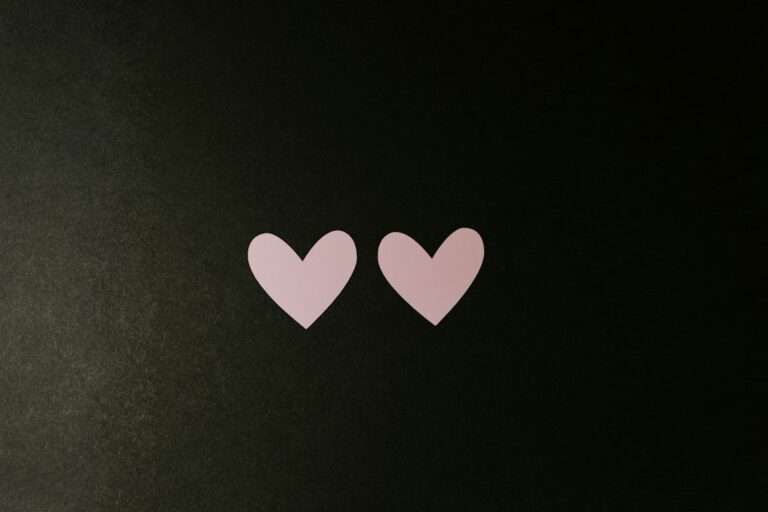Unraveling the Mysteries of Symbolism: The Trickster’s Role in Shaping Our Perception

Symbolism is a fundamental aspect of human culture. It allows us to communicate complex ideas and emotions through the use of symbols, which are objects or images that represent something else. Symbols have the power to evoke deep meaning and tap into the unconscious mind, where our deepest desires, fears, and motivations reside. One archetype that is particularly significant in mythology, folklore, and psychology is the Trickster.
The Trickster archetype is a universal figure that appears in various mythologies and folklore traditions around the world. The Trickster is a mischievous and often amoral character who challenges authority, disrupts social norms, and brings about change. This archetype embodies the unpredictable and chaotic aspects of human nature, as well as the potential for transformation and creativity.
Key Takeaways
- Archetypal symbols are a language of the unconscious mind.
- The Trickster archetype is present in mythology and folklore across cultures.
- The Trickster can be a catalyst for change and creativity.
- The Trickster is a symbol of rebellion and subversion.
- The Trickster has a shadow side of chaos, deception, and betrayal.
Understanding Archetypal Symbols: The Language of the Unconscious
Archetypes are universal patterns or symbols that exist in the collective unconscious, a concept developed by psychologist Carl Jung. These archetypes are deeply ingrained in our psyche and influence our thoughts, feelings, and behaviors. They are often represented through symbols, which serve as a language that communicates with the unconscious mind.
Symbols have the power to bypass our rational thinking and tap into our deeper emotions and instincts. They can evoke strong emotional responses and trigger unconscious associations. For example, the symbol of a snake is often associated with transformation and rebirth because it sheds its skin, while the symbol of a dove is often associated with peace and purity.
Some common archetypal symbols include the sun, moon, water, fire, tree, and circle. These symbols have been used throughout history in various cultures to convey universal themes and concepts. For example, the sun is often associated with life, energy, and enlightenment, while the moon is associated with femininity, intuition, and mystery.
The Trickster in Mythology and Folklore: A Cross-Cultural Analysis
The Trickster figure appears in various mythologies and folklore traditions around the world, often taking on different forms and characteristics. In Native American mythology, the Trickster is often portrayed as a coyote or raven who uses cunning and trickery to outsmart others. In African folklore, the Trickster is often portrayed as a spider or hare who uses cleverness and deception to achieve his goals. In European folklore, the Trickster is often portrayed as a mischievous fairy or imp who plays pranks on humans.
Despite these differences, there are common themes that emerge in Trickster stories across cultures. The Trickster is often portrayed as a boundary-crosser who challenges societal norms and disrupts the established order. He is a figure of chaos and unpredictability, but also of transformation and renewal. The Trickster embodies the dualities of human nature, such as good and evil, light and dark, order and chaos.
The Trickster as a Catalyst for Change and Creativity
| Metrics | Description |
|---|---|
| Number of creative ideas generated | The number of new and innovative ideas that were generated as a result of embracing the trickster archetype. |
| Percentage increase in productivity | The percentage increase in productivity that was observed after incorporating the trickster archetype into the workplace. |
| Employee satisfaction rating | The rating given by employees on how satisfied they are with their work environment after embracing the trickster archetype. |
| Number of successful projects | The number of projects that were completed successfully after incorporating the trickster archetype into the project management process. |
| Revenue growth | The percentage increase in revenue that was observed after embracing the trickster archetype in the business strategy. |
The Trickster archetype has the power to inspire innovation and transformation. By challenging the status quo and pushing boundaries, the Trickster disrupts stagnant systems and opens up new possibilities. In literature and art, Trickster figures often serve as catalysts for change, forcing characters to confront their own limitations and embrace new ways of thinking.
One example of a Trickster figure in literature is Loki from Norse mythology. Loki is a shape-shifter who uses his cunning and trickery to manipulate others. He often challenges the gods and disrupts their plans, but he also brings about change and transformation. Loki’s actions may be seen as chaotic and destructive, but they also serve to expose the flaws in the established order and pave the way for new possibilities.
In art, the Trickster can be seen as a symbol of rebellion against societal norms and expectations. Artists who challenge conventional ideas and push the boundaries of their medium often embody the Trickster archetype. They use their creativity and unconventional thinking to disrupt established norms and inspire new ways of seeing the world.
The Trickster as a Symbol of Rebellion and Subversion
The Trickster archetype is often associated with rebellion and resistance. Trickster figures challenge authority and disrupt social norms, often using their wit and cunning to outsmart those in power. They embody the spirit of the underdog, using their cleverness and resourcefulness to overcome obstacles and achieve their goals.
One example of a Trickster figure who challenges authority is Robin Hood. In English folklore, Robin Hood is a skilled archer who steals from the rich to give to the poor. He defies the corrupt authorities and fights for justice and equality. Robin Hood represents the power of the common people to resist oppression and fight for a better world.
The Trickster can also be a powerful symbol for marginalized groups and social justice movements. By challenging established norms and disrupting oppressive systems, Trickster figures inspire others to question authority and fight for their rights. They embody the spirit of rebellion and subversion, encouraging individuals to challenge the status quo and work towards a more just and equitable society.
The Shadow Side of the Trickster: Chaos, Deception, and Betrayal

While the Trickster archetype can be seen as a force for positive change, it also has a darker side. Trickster figures are often associated with chaos, deception, and betrayal. They can cause harm and create chaos through their actions, often without regard for the consequences.
One example of a Trickster figure with a dark side is the character of Iago in Shakespeare’s play Othello. Iago is a master manipulator who uses deception and trickery to destroy the lives of those around him. He plays on people’s weaknesses and insecurities, causing them to doubt themselves and turn against each other. Iago’s actions ultimately lead to tragedy and destruction.
The Trickster’s ability to deceive and manipulate others can be seen as a reflection of the shadow side of human nature. The Trickster embodies the darker aspects of the human psyche, such as greed, selfishness, and the desire for power. While these qualities can be destructive, they also serve as a reminder of the complexity and duality of human nature.
The Trickster in Contemporary Culture: From Comics to Pop Music
The Trickster archetype continues to be a relevant and resonant symbol in contemporary culture. It appears in various forms in modern media and popular culture, from comic books to movies to music. The Trickster’s ability to challenge authority and disrupt social norms makes it a powerful symbol for individuals who feel marginalized or oppressed.
In comic books, characters like the Joker from Batman or Deadpool embody the Trickster archetype. They use their wit and unpredictability to challenge the established order and disrupt the lives of those around them. These characters often serve as foils to the more traditional superhero figures, highlighting the flaws and contradictions in society.
In music, artists like David Bowie or Lady Gaga embrace the Trickster archetype through their unconventional personas and boundary-pushing performances. They challenge societal norms of gender, sexuality, and identity, inspiring others to embrace their own uniqueness and reject societal expectations.
The Trickster in Psychology: Jungian Analysis and the Collective Unconscious
In Jungian psychology, the Trickster archetype is viewed as a manifestation of the collective unconscious. The collective unconscious is a concept developed by Carl Jung that refers to the shared reservoir of knowledge and experiences that all humans inherit from their ancestors. It is made up of archetypes, which are universal patterns or symbols that exist in the collective unconscious.
The Trickster archetype represents the chaotic and unpredictable aspects of human nature that exist within all of us. It embodies our deepest desires, fears, and motivations, as well as our potential for transformation and creativity. The Trickster serves as a reminder of the complexity and duality of the human psyche, and the need to embrace both light and dark aspects of ourselves.
The Trickster can also appear in dreams and other forms of personal symbolism. Dreams often contain symbols and images that tap into the unconscious mind, including archetypal figures like the Trickster. These symbols can provide valuable insights into our own psyche and help us understand our deepest desires and fears.
The Trickster in Literature: From Shakespeare to Postmodernism
The Trickster archetype has been a popular literary device throughout history, appearing in works from Shakespeare to postmodernism. In classic literature, authors like Shakespeare and Chaucer often used Trickster figures to challenge societal norms and expose the flaws in the established order.
In Shakespeare’s plays, characters like Puck from A Midsummer Night’s Dream or Falstaff from Henry IV embody the Trickster archetype. They use their wit and cunning to disrupt the lives of those around them, often with humorous or chaotic results. These characters serve as foils to the more traditional and serious characters, highlighting the contradictions and complexities of human nature.
In postmodern literature, authors like Kurt Vonnegut or Thomas Pynchon often use Trickster figures to challenge conventional narrative structures and push the boundaries of storytelling. These authors embrace chaos and unpredictability, using their creativity and unconventional thinking to disrupt established norms and inspire new ways of seeing the world.
The Trickster’s Legacy and Its Relevance in Today’s World
The Trickster archetype continues to be a relevant and powerful symbol in today’s world. It embodies the unpredictable and chaotic aspects of human nature, as well as the potential for transformation and creativity. The Trickster challenges authority, disrupts social norms, and inspires individuals to question the status quo.
The Trickster’s legacy can be seen in various aspects of contemporary culture, from comic books to music to literature. It continues to inspire individuals to challenge established norms and work towards a more just and equitable society. The Trickster serves as a reminder of the complexity and duality of human nature, and the need to embrace both light and dark aspects of ourselves.
In conclusion, the Trickster archetype is a powerful symbol that taps into the unconscious mind and evokes deep meaning. It challenges authority, disrupts social norms, and inspires individuals to question the status quo. The Trickster’s legacy continues to be relevant and resonant in today’s world, inspiring change and creativity in individuals and society as a whole.
If you’re fascinated by the concept of symbolism and its various manifestations, you might be interested in exploring the symbolism of the sun. In a related article on Symbolism Hub, you can delve into the significance and meaning behind this celestial body. From its association with warmth, light, and life to its representation of power and vitality, the symbolism of the sun is rich and diverse. Discover more about this captivating symbol by clicking here.
FAQs
What is symbolism?
Symbolism is the use of symbols to represent ideas or qualities.
Who is the Trickster?
The Trickster is a character archetype found in many cultures and mythologies. They are known for their cunning and mischievous behavior.
What is the significance of the Trickster in symbolism?
The Trickster represents the chaotic and unpredictable aspects of life. They are often associated with creativity, transformation, and the breaking of rules.
What are some examples of Trickster figures in mythology?
Examples of Trickster figures include Loki from Norse mythology, Anansi from African folklore, and Coyote from Native American mythology.
How is the Trickster used in literature and art?
The Trickster is often used as a symbol in literature and art to represent rebellion, subversion, and the breaking of conventions. They can also be used to explore themes of morality and the consequences of one’s actions.
What is the difference between a Trickster and a villain?
While a villain is typically portrayed as evil and malicious, the Trickster is more complex. They may engage in mischievous behavior, but they are not necessarily evil. The Trickster can also be a hero or a catalyst for change.





